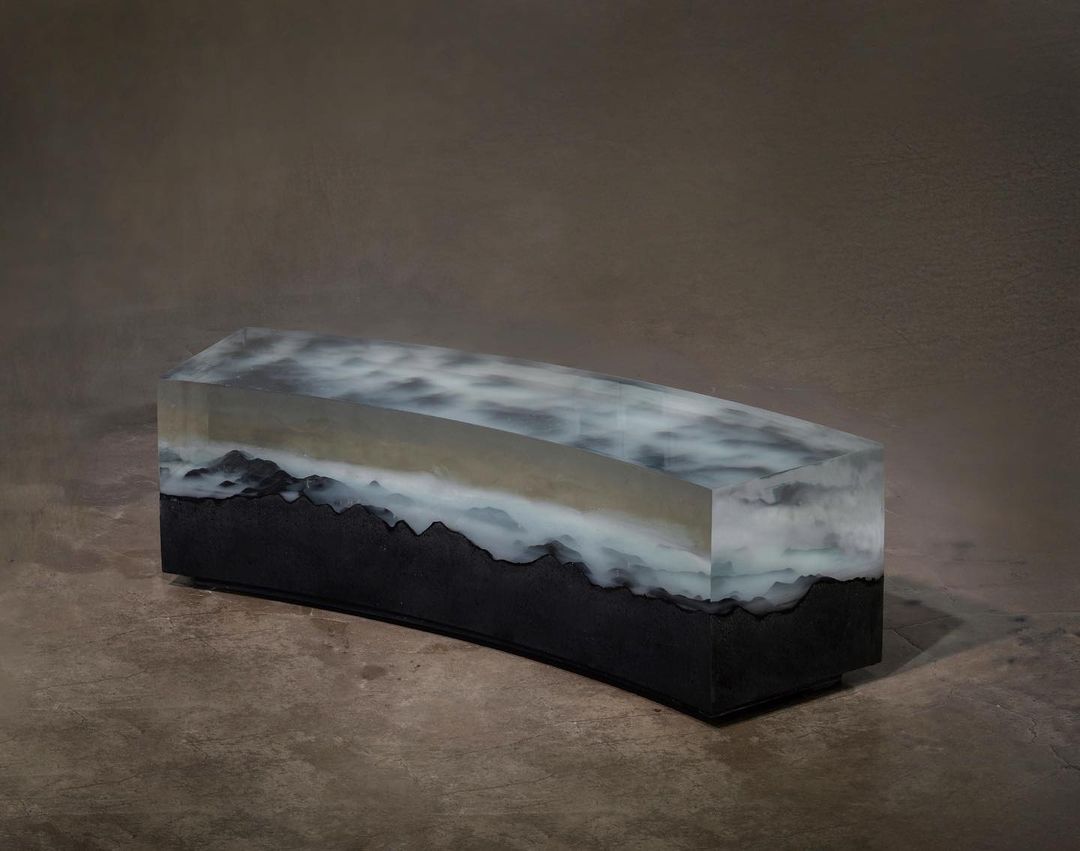The following is a list of gums and resins traditionally used in furniture finishes. They are all natural exudation from either trees, the fruits of trees or from parasitic insects that feed on trees. It seems appropriate that they also produce the best finishes for wood. The color, density, hardness, brittleness and durability range greatly. Some are soluble with single solvents while others can be solved with several solvents. The dates in parentheses are earliest recorded date of first use.
Amber (14c) Fossilized tree pitch, usually from evergreens, does not yellow. Baltic amber is the most common. The hardest natural resin known. Can be solved with turpentine and some can be solved in alcohol. Un-dissolved collections in the bottom of the mixing containers should be remove, dried out and solved with another solvent. An ingredient in the finest varnishes. From dark, to red, to orange, to pale, to white or clear. Lumps and powder.
Ammoniacum (14c) Gum Ammoniac, a gum resin from an Umbellifera, Dorema ammoniacum. Yellow to white brittle gum. Soluble in alcohol or water, should be warmed. Porcelain cement.
Arabic (15c) Gum Senegal, Gum Acacia is a water soluble from the Acacia trees. Excellent for gold leaf application, can be mixed with rabbit skin, parchment or other glues. Good base for water colors.
Balsam (12c) Canadian, this hard resin is from evergreen trees and vary from clear to yellow. Known for its optical properties, very clear. Medicinal properties, good incense. Solvents: Turpentine and Alcohol. Tears, powdered or liquid.
Benjamin (1571) Gum Benzoin, generally yellowish balsamic resin occurs from pink to light blue is hard and alcohol soluble. Excellent resin for fine varnish, Siam gum (pink) is a valued incense. Has properties. Should be mixed with other resins. Lumps, powdered and tears.
Burgundy Pitch Obscure varnish ingredients used in the nineteenth century from the pitch of the Norway spruce. White Burgundy pitch was used in a paint recipe ca.1815.
Catechu (1683) Resinous extract from Acacia catechu: leaves and twigs. Lacquer and varnish ingredient. Soluble in water and alcohol. Japonica, Terra Japonica, Gambir.
Colophony (14c) Rosin is a byproduct of turpentine distillation or pitch evaporation. Used in varnish manufacture. Too brittle to be used alone but will catalyze to the hardest resin in the mixture, weathers well. Soluble in alcohol or turpentine. Broken chunks to powder. This is the material with which you rosin up your bow.
Copal (1577) Resins, new or fossil from various tropical trees. Hard, dense resin, clear to light yellow. Excellent optical qualities and is durable in the weather. Soluble in turpentine and linseed oil and alcohol. Hard copals are called Kaurie and soft copals are grouped and called Anime (animi). Excellent for cements. Kauries are difficult to solve. Available in all forms: tears lumps, powder, liquid, etc.
Dammar (15c) Damar is a clear to yellow, hard resin from various conifer trees. Excellent for fine art varnish, not very durable. Soluble in alcohol or turpentine, solves with turpentine even after drying. Granules or powder. Yellows on exposure to UV, and will eventually yellow anyway.
Dragons Blood (14c) A deep red resinous gum exudation of the fruits of a rattan palm. Soluble with alcohol or water. Makes an excellent varnish, can be extended with less expensive gums and resins. Prized incense and smells delightful when being applied as a varnish. Available in reeds, cakes or pieces. Decant the lees.
Elemi (1837) Gum elemi, resin elemi, from tropical trees of the Burseraceae family, used for ink, cement, varnish and lacquer. Very pleasant odor, repels insects. Quickly soluble in (warm) alcohol and soluble in turpentine, insoluble in water. Soft and must be mixed with harder gums and resins. Available in sticky lumps. Gumbo limbo.
Gamboge (1712) A gum colored from orange to brown from the Asian tree (Garcinia spp.) Transparent, used for aging and coloring gilding and watercolors. Considered a premium gum, usually commands a high price. Soluble in water or alcohol.
Lac (1688) Japan Wax (1859), Japanese Lacquer, Chinese Lacquer (1592) is the fat sap or milky juice of the berries of Rhus vernicifera or R. succedanea, Asian sumacs, Varnish Tree (1758). This is how the beautiful Oriental Lacquer is accomplished. Authorities say that this is the only true “”lacquer”” Soluble in warm alcohol. Urushi.
Mastic (14c) European tree (Pistacia spp.) of the sumac family producing a thick flexible gum. High quality varnish suitable for fine art and photographic touch up. Soluble in alcohol or turpentine. Cement ingredient. (Cyprian turpentine).
Sandarac (14c) From Callitris spp. From a conifer is a translucent hard but brittle resin for incense and varnish. Alcohol or turpentine soluble. Produces a high shine and comes in light yellow to clear, few inclusions. Excellent for cements and available in tears, must be strained or decanted.
Shellac (1713) Known since the 15th century. Excrement from Lacca lucifera (or Lucifera lacca), a parasitic bug living on an Asian fig tree. Collected, cleaned and sold in stick lac, seed lac, buttons, flakes or ground and solves with alcohol that should be strained. A finish that has not been duplicated synthetically. Introduced to Europe in the early 1700’s and was quickly the vogue. The chief and some say only ingredient in French Polish.
Tragacanth (1573) From Astragalus gummier, a yellowish, expensive gum water soluble (swells to a gel with water). Because of its pharmaceutical use, this is currently the most expensive gum together with amber are currently the most expensive gum on the market. Available in granular and ribbon form.

'Historic Gums & Resins' has no comments
Be the first to comment this post!